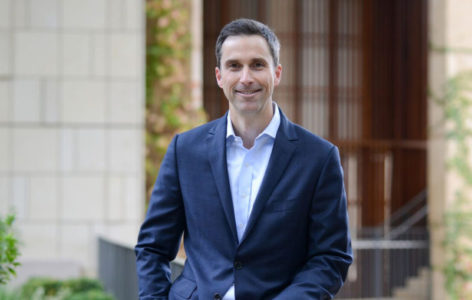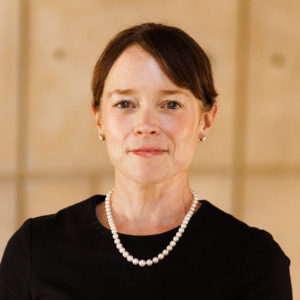Stanford Law Report on Legal Innovation After Reform
This week, Stanford Law School’s Deborah L. Rhode Center on the Legal Profession published the first comprehensive study of the legal innovations that have emerged in Utah and Arizona in the two years since those states implemented significant reforms to the regulation of legal practice. The report presents a first-of-its-kind empirical analysis of the types of innovative legal service providers enabled by these reforms and who those innovations serve. The product of a law school policy practicum with and prepared for the Regulatory and Practice Reform Committee of the Michigan Justice for All Commission, the report provides much needed insight into how changing the rules governing legal practice in U.S. legal markets might impact consumers, lawyers, and access to justice. Here, Professor David Freeman Engstrom, co-director of the Deborah L. Rhode Center on the Legal Profession, and Lucy Ricca, director of policy and programs at the Rhode Center, discuss the report and their findings.
Why is this report so important?
Engstrom: It has been almost exactly two years since Utah and Arizona implemented some of the most far-reaching changes to the regulation of law practice in at least a century. During that span, the debates around nonlawyer ownership and nonlawyer practice have continued to rage with much hyperbole and conjecture. Through it all, two core questions have arisen again and again:
- What types of innovation in legal services delivery models will different reform approaches generate?
- Who will be served by those innovations?
This report begins to answer these questions. It presents a comprehensive review of the dozens of new legal service entities authorized in Utah and Arizona, providing a much-needed empirical grounding for ongoing policy debates.

Answers to the above questions are urgently needed because “regulatory reform,” as some call efforts to relax the usual rules that govern legal services, is at a pivotal moment. This past summer, California legislators moved to shut down a working group formed by the Trustees of the State Bar to study possible regulatory changes—a body on which Lucy and I served as appointees—based in large part on worries that, if reforms were adopted, low-quality providers would swoop in, displace lawyers, and harm consumers. While plenty of other states are still actively considering similar reforms, the California experience is a cautionary tale about what can happen when public debate isn’t disciplined by actual evidence.
One of the states still considering reforms is Michigan, and the Regulation and Practice Reform Committee of the Michigan Justice for All Commission was tasked with making a recommendation on how to go about it. When the committee asked us for help, we formed a “policy lab,” a unique kind of course at Stanford Law School, and launched the research for the report with a talented group of law students. We hope that our report will be useful to decision-makers in Michigan and, now that it’s been more widely released, to the many other states considering reforms.
Could you briefly explain what it is that Utah and Arizona did?
Ricca: Put simply, Utah and Arizona have each liberalized the regulation of the practice of law in their states. Each state has taken a different approach to regulatory reform however, raising interesting questions about how regulatory choice impacts market changes. First, the two states vary in the target of their reforms—that is, which rules are relaxed. Utah allows entities to seek waivers of both the ban on nonlawyer ownership (Rule of Professional Conduct 5.4) and the ban on the unauthorized practice of law by nonlawyers (UPL). Arizona, by contrast, allows entities to bring on nonlawyer ownership only. Second, the states vary in terms of their regulatory lever—that is, how the rules are relaxed. Utah implemented a regulatory sandbox, a space within which certain regulations (Rule 5.4 and UPL) can be relaxed under ongoing oversight by a regulator. The Utah Supreme Court has authorized the sandbox to run for seven years. Arizona flat-out repealed Rule 5.4 and created a licensing process for so-called “alternative business structures,” or ABSs, a term of art used to describe entities without pure lawyer ownership.
And what is driving these reforms?
Engstrom: At the core, the reforms are designed to address the immense crisis in access to civil justice in the U.S. Some of the best empirical evidence shows that there is a huge amount of unmet civil legal need. The clearest data come from the courthouse, in the form of cases we can see, and it’s not pretty. In three-quarters of the 20 million civil cases filed in American state courts each year, at least one side lacks a lawyer. That’s a stunning statistic. And we know that what we see in the courthouse is only the tip of the iceberg. Tens of millions more people are dealing with legal issues that will never get to the courthouse—child custody and family issues, end-of-life planning, housing, employment, and debt collection.
Moreover, we know that, while the impacts of unmet legal need are most strongly felt by low-income and indigent people, the justice gap extends far up the economic spectrum, affecting working and middle-class people like teachers, nurses, first responders, and small-business owners.

The problem is so enormous that we can no longer look exclusively to solutions like legal aid and pro bono. Both legal aid and pro bono can surely help to address the justice gap. But they are unlikely to be enough on their own. The funding needed and the pro bono hours needed are simply unrealistic. Some experts estimate that providing even one hour of pro bono assistance to every American that needed it would require American lawyers to devote more than half of their time to the enterprise.
Ricca: Yes, these unmet legal need statistics are bright red, flashing indicators that the legal services market is not working. There are a number of reasons for this dysfunction, including low investment in legal aid, a lack of funding for state courts, and growing economic insecurity generally. But there is a growing scholarly consensus that the restrictive regulation of the practice of law is also a significant factor.
The rules, particularly the rule barring nonlawyer ownership and the rule barring nonlawyer provision of legal services, are economic restrictions that impair the functioning of the legal services market, particularly for regular consumers. These rules make providing legal services really expensive and difficult to scale, and thus out of reach to most people. They also hive off law from the rest of the modern economy, where companies of all shapes and sizes have used new forms of investment and technology to drive innovation, scale, and interdisciplinary solutions.
The state supreme courts in Utah and Arizona have embraced regulatory reform as a necessary, if not sufficient, step toward impacting the access gap through liberalization of the legal services market to drive down costs and increase diversification of providers.
Of course, not everyone believes that market liberalization is the right approach, and critics have raised concerns about preserving independence of judgment and the potential influence of an unbridled market on the quality of legal service provision. Members of the bar also raise concerns that liberalization will undermine their business interests.
What was the goal of conducting the research summarized in this report?
Engstrom: While many states have been studying possible reforms, Utah and Arizona have boldly moved ahead, implementing their reforms and authorizing new legal services providers to come into their systems. So what’s actually happening in those states? What kinds of entities are coming online? How are they structured? What services are they offering and to whom? Are these new entities helping just poor folks, just middle-class folks, or both? Is there evidence of consumer harm? These are all key questions—and we’re proud that our report provides at least tentative answers.

Ricca: This report presents results from a comprehensive analysis of the legal service entities that are emerging in response to rule reforms. The analysis is based on two types of data. First, to understand what types of innovation are possible, we conducted in-depth, semi-structured interviews with 37 entities that have obtained authorization in liberalizing jurisdictions, half in Utah and Arizona and half in the U.K., where reform efforts are more mature. Second, to understand how much innovation may result in U.S. legal markets and who is served, we conducted a comprehensive analysis of the application, authorization, and other public-facing materials from all 57 of the authorized entities in Utah and Arizona as of June 30, 2022.
And what did you find?
Engstrom: The report offers five key insights. First, regulatory reform is spurring substantial innovation across authorized legal service entities, both in their business structure and in their delivery models. Our report identifies five main innovation types: (1) traditional law firms making changes to their capital or business structure or service model; (2) “law companies”—that is, companies without pure lawyer ownership—practicing law; (3) “non-law companies” that are new entrants to the legal sector now offering a mix of non-legal and legal services; (4) intermediary platforms; and (5) entities using nonlawyers and technology in previously prohibited ways to deliver legal services. Second, lawyers are playing a central role in this innovation, remaining central to the development and delivery of legal services. Lawyers are not shunted to the sidelines; they are owners, employees, compliance officers, supervisors, and investors in these new entities. Third, a majority of entities are using technology to deliver services in new ways and are primarily serving consumers and small businesses.
Can you offer a few examples of how this is playing out in Utah and Arizona?
Sure. A great example that sits at the intersection of these first three findings is Hello Divorce, a company in the Utah sandbox. It was founded by a divorce lawyer who realized that, because not everyone needs her usual pricey, bespoke counsel, she could extend her reach and serve more people by developing a tiered, fixed-fee set of services using a mix of lawyers, nonlawyers, and software. Two other examples are well-established national brands: LegalZoom, which sought authorization in Arizona, and Rocket Lawyer, which entered the Utah sandbox. Both companies are seeking to expand the limited legal document completion services they have long provided by employing lawyers who can provide supplemental services. With rule reforms in Arizona and Utah, a consumer might initiate a service with LegalZoom or Rocket Lawyer using the document completion platform—completing a will, for example—but then seek personalized legal assistance from a staff lawyer where desired.
Ricca: The fourth insight is that the different reform choices made by Utah and Arizona seem to matter. As noted above, Utah’s reforms target the UPL ban as well as the nonlawyer ownership ban. Utah’s sandbox permits legal service entities to deploy nonlawyers to perform limited legal practice services such as legal advice and assistance with completing legal documents. Arizona does not have that option through its authorization of legal service entities. That choice appears to impact the types of innovations that are emerging. Utah has authorized the only nonprofit entities primarily serving low-income and indigent populations, and each of those nonprofits are using nonlawyers as their service providers. Timpanogos Legal Center, a nonprofit legal clinic affiliated with BYU Law School, sought authorization to deploy trained lay domestic violence advocates to provide legal assistance to survivors seeking protective orders and stalking injunctions.
Engstrom: A final insight is an important one: The reform efforts in Utah and Arizona do not appear to have resulted in a substantial increase in the risk of consumer harm. Based on consumer complaint data collected in both systems, neither state has experienced an uptick in consumer complaints.
Ricca: There are, of course, multiple caveats to the findings in this report. Because the reforms are only two years old, it’s still early days. Moreover, we only have limited information on some of the entities. Finally, both Utah and Arizona are simultaneously pursuing a new limited licensure program for legal paraprofessionals, which may affect the innovation incentives of entities considering whether to seek authorization for a new approach.
What are the next steps for the Rhode Center in the area of regulatory reform and with this research in particular?
Engstrom: As we have noted, the regulatory reform debate is in dire need of rigorous empirical evidence on what is actually happening in liberalized legal markets. For too long, decisions about the future shape of the civil justice system have been made in an empirical vacuum. The goal of the Rhode Center is to generate high-quality, decision-relevant research. We believe our report should be required reading for policymakers of all stripes—justices, judges, court administrators, legislators, and others—weighing rule reforms. And we hope the work we have started here will can continue to aid decision-makers: The Rhode Center plans to maintain a regularly updated website clearinghouse of the entities authorized in Utah and Arizona and in any other states that move forward on reform, thus continuing to build out the evidence base on the impact of reforms and making that evidence available to decision-makers.
David Freeman Engstrom is the Law School Venture Fund Professor and co-director of the Deborah L. Rhode Center on the Legal Profession. A particular focus is the role of technology in the civil justice system, including lawyers’ use of “legal tech” tools to serve their clients as well as a growing menu of new technologies designed to assist those without lawyers. Professor Engstrom is the co-founder of the Filing Fairness Project, an ambitious and innovative effort that is bringing together six states to simplify filing procedures and eliminate barriers created by a state-level checkerboard of technical systems. Engstrom has published numerous articles on the implications of new technologies for litigation and the legal system and is the editor of the forthcoming volume, Legal Tech and the Future of Civil Justice (Cambridge University Press 2023). From 2020 to 2022, he served as a public appointee to the State Bar of California’s Closing the Justice Gap Working Group, tasked with proposing reforms to foster innovation in legal services delivery models.
Lucy Ricca is the director of policy and programs at the Deborah L. Rhode Center on the Legal Profession. Before starting this role, Ricca was the first Executive Director of the Utah Office of Legal Services Innovation, a new regulator of legal services launched by the Utah Supreme Court. Ricca has been immersed in the movement to reform regulation of the legal profession to increase innovation, market diversification, and access to justice. She was a Special Project Advisor at the Institute for the Advancement of the American Legal System (“IAALS”), advising on the Unlocking Legal Regulation project.
Engstrom and Ricca both served on a working group formed by California’s Trustees of the State Bar to study possible regulatory changes in the state.
